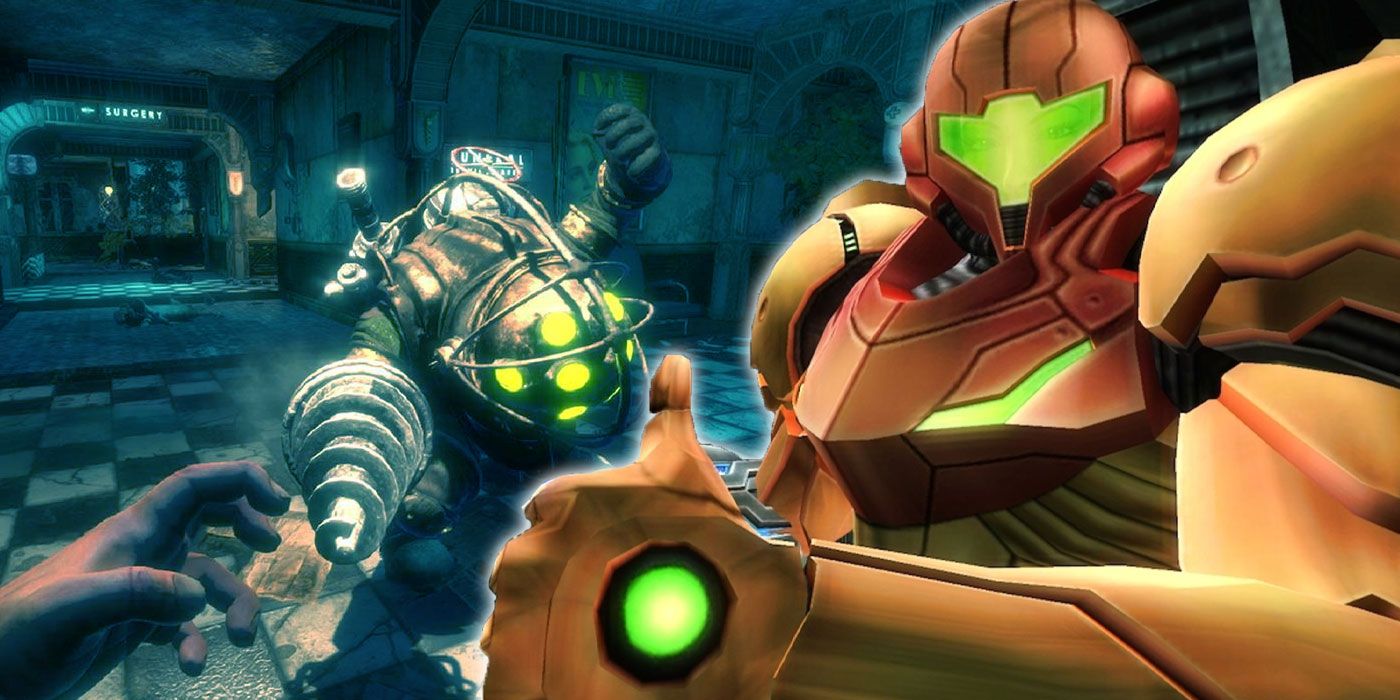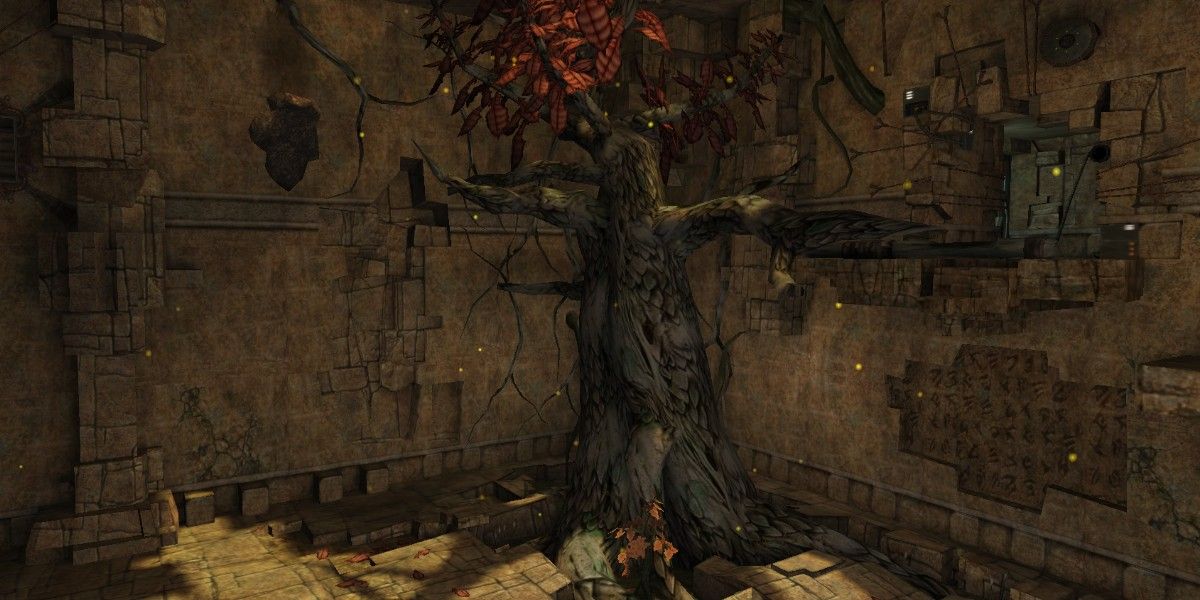Irrational Games' magnum opus, BioShock, was a masterpiece in atmospheric storytelling and worldbuilding via the form of a first-person shooter. With a foreboding entrance that quickly establishes the game's world, immediately followed by an oppressive atmosphere with everyone and everything trying to kill the player, BioShock is an incredibly isolated and harrowing experience detailing the moral decay of humanity under the sea.
Critics hail BioShock as one of the most ground-breaking and original video games of all time, being a major advancement in video game storytelling and a master at immersing the player as it uses everything from architecture, creature design and sound to craft Rapture into a very believable Objectivist dystopia. It's often said, however, that creativity is hiding your influence, as many of BioShock's achievements were in fact predated by Nintendo and Retro Studios' Metroid Prime.
RELATED: BioShock's Helmetless Big Daddy Will Make You Beg For The Rapture
Apocalyptic Logs
While BioShock has a linear and straightforward story that is still carried out through scripted sequences, the vast majority of Rapture's mythology is told through audio diaries that log the speaker's thoughts and feelings around the city. Many significant plot twists and story developments are only outright spelled out for the player through audio diaries, making them the single most important narrative device in the entire game. BioShock's story would not nearly reach as much acclaim as it did without implementing these nonintrusive and optional audio diaries.
Metroid Prime had, in fact, done something very similar five years before BioShock's release, done through the form of the Scan Visor. Samus can scan objects, environments and creatures to find more information on them. This is not only the primary way to find hidden items and enemy weaknesses, but it is also the only form of narrative and direction that the original Metroid Prime has. The Chozo Lore manuscripts found throughout the game are the only things that give the player any background on the planet Tallon IV and what happened to it, giving many players some form of direction and incentive to follow through with scanning as much as they can.
A Living, Breathing World
Among the many aspects praised in the original BioShock was the sheer attention to detail given to Rapture's overall design and how the player reacts to the world. Ambient noises from marine wildlife outside the glassy, watery halls of Rapture's locales serve to fully immerse the player in this massive aquarium of a city. The distant cries of crazed splicers juxtaposed against the broken jukeboxes playing happy tunes provides a truly nightmarish picture of Rapture's downfall without ever saying a word.
In terms of immersion, there was clear inspiration taken from Metroid Prime with how Samus sees each area in Tallon IV. Snowflakes will fall upon Samus' visor in the Phendrana Drifts and her sight will turn to horrible static upon approaching an electrical opponent. Every component of Samus' movement makes a ton of sound for an early GameCube game, with the Morph Ball makes realistic rolling sounds and subtle, mechanical whirring in Samus' jumping and shooting.
Level Design and Concepts
While BioShock is a mostly linear first-person shooter, the game encourages the player to explore every area of Rapture and backtrack to find new items and unlock new pathways. Many locations cannot be accessed until Jack gets a specific plasmid. This kind of lock-and-key action-adventure gameplay is the same formula applied by the Metroid franchise since its inception in 1986. The comprehensive map system and environmental storytelling of BioShock are extremely reminiscent of many key puzzles and locations in the original Metroid Prime.
But while the first Metroid Prime is certainly influential to games like BioShock in many ways, it wouldn't be until BioShock Infinite that the similarities became more readily apparent. Set in the floating city of Columbia, one of Infinite's most notable gameplay features is the exhilarating Sky-Line traversal system, where Booker DeWitt can use a mechanical hook to attach to a super-fast railway. Metroid Prime 3: Corruption was 6 years ahead of Infinite, not only showcasing a floating city of its own in the form of Elysia's SkyTown, but it also had a shockingly similar sky-line railway system for traversal between areas, requiring Samus to use the Grapple Beam.




